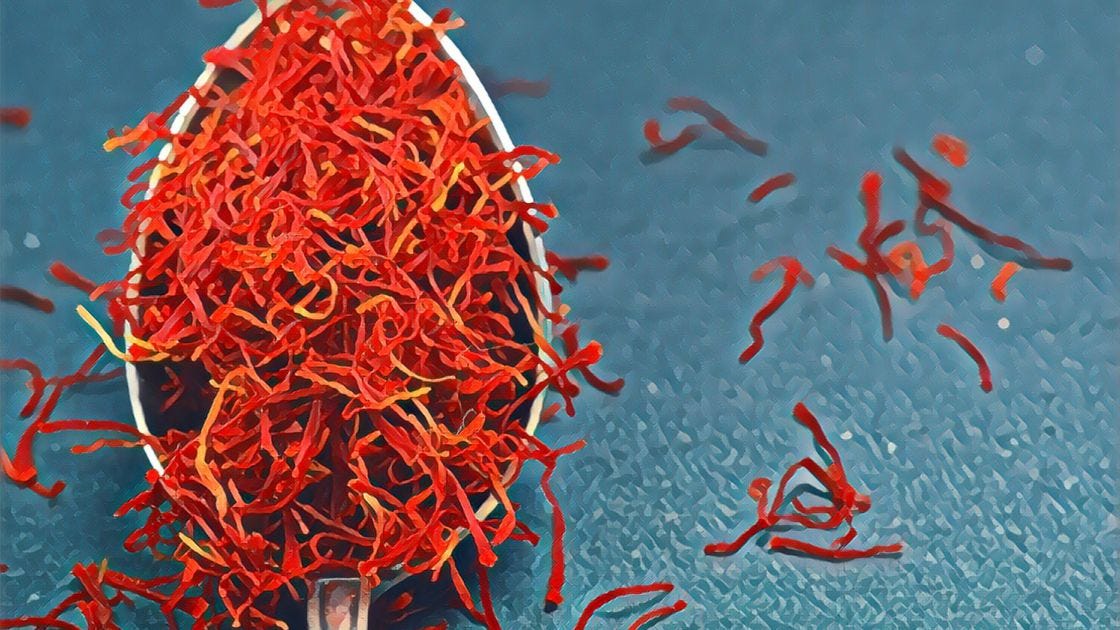Saffron research (ADHD, mood, fatigue, cholesterol) and Wilson's Disease
Two new articles this week!
Hi everyone,
I have two new articles for you this week!
First up is an article on saffron. I have seen saffron extract mentioned in research studies related to several different topics recently. In my mind, saffron was an expensive spice that I rarely used. It turns out that there are over a hundred randomized, placebo-controlled clinical trials of saffron extract showing efficacy for ADHD, Alzheimer's, depression, LDL cholesterol, triglycerides, and more.
The second new article explains Wilson's disease, a copper regulation disorder. This was a request from a member that I had put off writing for a while, but it turned out to be an interesting topic to explore. It is estimated that about 1% of the population carries one copy of a Wilson's disease mutation.
Gratefully yours,
~ Debbie
Saffron Extract: What does the research show?
Key takeaways:
~ Saffron is a spice and medicinal plant extract that has been used for thousands of years.
~ Recent clinical trials show that saffron extract is as effective as standard medications in some people for ADHD, Alzheimer’s, major depressive disorder, and high cholesterol.
What is saffron extract?
Saffron comes from the stigmas of the flower of Crocus sativus L. The known use of saffron dates back to the Minoan civilization in Crete some 4,000 years ago, but some records date its use as far back as the 12th century BC. Historically, it has been used as a spice and medicinal food throughout India, Europe, and the Middle East.
The compounds in saffron include several unique terpenoids, such as safranal, as well as kaemferol and quercetin. The distinctive color comes from the carotenoid content of saffron. All of these combine to give saffron health-promoting properties as well as antimicrobial properties when added to foods as a spice.
Wilson’s disease: ATP7B gene mutations and copper in the brain
Key takeaways:
~ Copper is necessary in small amounts, but too much copper can cause neurological and liver problems.
~ Mutations in the ATP7B gene can cause an excess of copper in the liver and brain. This is called Wilson’s disease.
~ About 1 in 90 people carry one copy of the mutation. While Wilson’s disease is usually only found in people with two copies of ATP7B mutations, people with one mutation may have more subtle changes to copper levels.
What I've been reading:
1. Sleep–wake therapy gives new hope for teens with depression
The link between depression and circadian disruption has been known for a long time. Genetic studies show that, for some, disrupting circadian rhythm is a root cause of depression. While 40% of teens report being night owls, the number jumps to 80% in those with depression. This article is on a 'new therapy' that treats depression in teenagers by resetting their circadian rhythm through new bedtime, sleep, and waking habits.
Related Genetic Lifehacks article: Circadian rhythm disruption as the root cause of depression
2. Tasmanian tiger RNA is first to be recovered from an extinct animal
The headline says it all here! Researchers were able to extract RNA sequences from a 132-year-old museum specimen of a Tasmanian tiger. It gives the researchers a glimpse into what proteins were being translated in the creature. While I think getting the DNA of extinct creatures is fascinating, in the back of my mind, I'm always hoping that everyone has watched and understood Jurrasic Park.
3. Two new research papers on long Covid:
SARS-CoV-2 reservoir in post-acute sequelae of COVID-19 (PASC) A well-written and readable overview of the research on the persistence of SARS-CoV-2 in people with long Covid.
Multimodal Molecular Imaging Reveals Tissue-Based T Cell Activation and Viral RNA Persistence for Up to 2 Years Following COVID-19 A pre-print of a study showing persistence of SARS-CoV-2 in cells in the colon two years after initial infection.






